A big part of fishkeeping is adding water to your aquarium.
Whether it’s filling a new tank or performing a water change, you need a reliable and safe source of aquarium water – the lives of your fish depend on it!
Today, I share with you all the different sources of water you can add to your fish tank, as well as the pros and cons of each.
By the time you finish reading, you will know exactly which water source is best for your tank and the type of water.
Now, there are three others you should test. However, the ideal levels of these vary according to what you keep in your tank.
Contents
The importance of testing your water source
Before continuing, I want to make one thing clear:
Whatever water you decide to fill your aquarium with, test it first!
You see, water quality is the number one deciding factor in whether your fish live or die.
While you cannot see it, your water actually contains many different salts and elements dissolved in it.
Some of these are good. Others are dangerous and can kill your fish.
Fish can adapt to less-than-ideal water conditions. However, it does negatively impact their health and happiness. For example, your fish may not live as long or refuse to breed.
Part of your job as a fish keeper is to monitor these levels in your water and make adjustments as necessary.
Unfortunately, you won’t know what’s in your water until you test it.
Don’t worry! Testing is quick and inexpensive. You can do it yourself with an aquarium test kit. I recommend grabbing an API Master test kit. It contains almost everything you need to perform these tests.
What should you test for? Well, start with these four…
- Ammonia – Ideal level: 0
- Nitrite – Ideal level: 0
- Nitrate – 10 ppm or less
- Phosphate – 0.05 ppm or less
Now, there are three others you should test. However, the ideal levels of these vary according to what you keep in your tank.
Don’t stress if you test your water and find that the levels are not ideal. Many products are available to improve the water quality. For example, you can use Purigen to remove ammonia or an alkalinity buffer to increase KH.
All water sources require some preparation on your part to make it safe for your fish.
The results of your tests will guide you on how to make your water safe or whether you should choose a different water source altogether!
With that out of the way, let’s look at the different sources of water you can use in your aquarium.
1. Tap water
Tap water is the most common source for water in freshwater aquariums, and it’s easy to see why…
Simply turn on your faucet, and you have as much water as you need – it’s cheap and readily available.
After all, you are already paying the water bill. Why make life harder by using a different water source if you don’t have to?
The good news is, for the majority of you, tap water is all you need to fill your aquarium.
Just one problem. Tap water quality varies according to where you live. We all know what happened with the Flint water crisis![1]
Concerned about the quality of tap water?
Ask your local fish store!
Any fish store in your area will have used local tap water for years. If anyone has advice for using tap water to fill an aquarium, it’s these guys.
Okay, so your tap water is safe to use?
Then, there is just one more thing you need to do before adding it to your tank…
Dechlorinate your water!
Your local water supply adds chlorine or chloramine to the water to make it safe to drink. These disinfectants kill bacteria and other microbes increasing the quality of water.[2]
Chlorine, however, doesn’t differentiate between good bacteria and bad bacteria. It destroys it all.
For your aquarium, this is a problem…
You see, bacteria live inside your aquarium filter. Good bacteria. In fact, the entire reason you cycle your aquarium is to introduce these good bacteria.
If these beneficial bacteria die, then the water will soon turn toxic to your fish.
So, before you add tap water to your aquarium, you must first dechlorinate it to keep your fish healthy.
Fortunately, this is as simple as adding a water conditioner to your aquarium. I personally recommend Seachem Prime.
Not only does Prime dechlorinate your tap water, but it can also be used in an emergency to detoxify ammonia, nitrite and nitrate. If you have a freshwater aquarium, keep a bottle of this on hand at all times.
Pros:
- Readily available
Cons:
- Needs to be dechlorinated
- Variable parameters
2. Well water
Well water is untreated groundwater that is piped into your home. It can be hit or miss whether your well water is suitable for your aquarium.
Unlike tap water provided by your local water supply, the government does not test the quality of well water.[3]
The exact water parameters of your well water entirely depend on where you live in the country.
For example, states like Florida and Arizona have very hard groundwater while states like New York and Colorado have very soft water.[4]
But the variations don’t end there…
Especially if you live in a rural area where there are lots of farms. When it rains, fertilizer can wash into the groundwater and contaminate it with phosphates and nitrates, which can lead to problems in your aquarium.
So while you may have to harden or soften your well water, at least you won’t have to dechlorinate it – well water is chlorine-free.
I’d only recommend well water if you plan on testing it regularly.
Pros:
- Available in your own home
- Doesn’t require a dechlorinator
Cons:
- Unpredictable mineral content and pH
- Susceptible to runoff
- Needs regular testing
3. Reverse osmosis water (RO water)
Set up a reverse osmosis (RO) system under your sink, and you’ll have pure water on demand.
To put it simply, RO works by forcing water through a super fine filter called a membrane.
The holes in this membrane are so fine that only nearly pure water can make it through. Minerals, chlorine and even many bacteria are too large to make their way through the membrane. Reverse osmosis is capable of removing 90-99% of contaminants from water.
Purified water comes out one line while the leftover wastewater exits through another.
Now, here’s the catch…
Reverse osmosis is so effective that it will also filter out minerals and elements from the water. Even those you want to keep– the trace minerals that are essential for osmoregulation in healthy fish and a stable pH.
Fortunately, many products are available that help add the good stuff back to your RO water.
In a freshwater tank, use a remineralizer like Seachem Equilibrium to restore the mineral balance.
In a saltwater tank, your salt mix adds the essential salts and elements to the water.
A reverse osmosis system ranges anywhere from $50 to $300. The filters need to be replaced periodically, however. Hard water may require replacing the filter every 6 months, while those with soft water can get up to 2 years of use before replacement.
Pros:
- Removes between 95-99% of contaminants
- Made in your own home
Cons:
- Requires set up and maintenance
- Water must be remineralized
4. Deionized water (DI water)
A deionization unit is another device you can connect to your plumbing to achieve pure water for fish tanks.
Deionization works a little differently than reverse osmosis. A deionization unit contains filters filled with a chemical resin.
The science behind these chemical resins is both impressive and complex. To put it super simply, the resin attracts and traps contaminants and exchanges it for the ingredients needed to create pure water.
Deionization units remove both minerals and even man-made chemicals such as pesticides from the water.
The downside with DI systems is that they cannot remove bacteria or sediments from your water. However, when used correctly, a deionization system can eliminate the 5-10% of contaminants that a reverse osmosis system cannot.
Just like reverse osmosis, deionized water needs to be remineralized before being used inside your tank.
In aquariums, DI units are rarely purchased on their own. They are used in addition to an RO system, which brings me to my next water source…
Pros:
- Removes contaminants that an RO system cannot
- Purifies faster than an RO system
- Made in your own home
Cons:
- Cannot filter out bacteria
- Requires set up and maintenance
- Water must be remineralized
5. RO/DI water
What if you could get the benefits of both reverse osmosis and deionization in a single device?
Well, it turns out you can. An RO/DI filtration system takes advantage of both filtration methods. The result is water that is considerably more pure than using each technique individually.
The result is the purest water possible, created right in your own home.
RO/DI units are commonly used for reef tanks, where even trace amount of contaminants can upset sensitive corals.
Pros:
- A complete pure water solution
- Made in your own home
Cons:
- Requires set up and maintenance
- Water must be remineralized
6. Distilled water
If you only occasionally need purified water, distilled water may be a better option.
Distilled water is made in an industrial setting by boiling water to produce steam. As the water is boiled, it kills off bacteria. As the steam rises, it leaves behind impurities, such as chlorine and minerals.
The steam is then cooled, turning back into pure water. The water is then collected and sold as distilled water.
Found on the shelf of your local grocery store, you can pick up a gallon of distilled water for under a dollar.
The only downside to distilled water is that it’s not practical for a larger tank. While distilled water is darn cheap, you’ll need an awful lot of it to fill a 50-gallon tank.
Just like with the previous pure water sources, you must remineralize distilled water before adding it to your tank to make sure that appropriate amounts of minerals is present.
Pros:
- Pure water
- Affordable
Cons:
- Must be purchased on an ongoing basis
- Not practical for big tanks
- Must be remineralized
7. Bottled drinking water
Bottled water is great for drinking on a hot day, but it may not be the best solution for a healthy aquarium.
You see, there are three different types of bottled drinking water available:
- Purified water – Tap water that goes through an RO/DI system or distilled.
- Filtered water – Tap water that goes through various filters such as charcoal to improve taste.
- Spring water – Water that is collected underground. It may or may not go through additional filtering.
Each of these results in water with different parameters. So, you need to test your bottled water carefully before deciding how to adjust it. For example, some bottled water still needs chlorine removed.
And because bottled water is designed for us to drink, it is often considerably more expensive than just using distilled water.
I only recommend using bottled water as fish tank water in an emergency, when nothing else is available.
Pros:
- Low in contaminants
- Sold almost everywhere
Cons:
- Expensive
- Not practical for big tanks
- Requires testing to determine water quality
8. Rainwater
Another form of water source for aquarium water is rain.
Rainwater has a low pH and almost no mineral content, so it requires modifying on your part before it is suitable for aquarium use.[5]
All you need is a large barrel or storage tank, and you are set.
Be mindful of the few downsides to using rainwater as a water source for your aquarium.
First, you need it to rain. That makes this solution unsuitable for those living in a dry state like Nevada.
If it doesn’t rain frequently, then you risk running out. It is for this reason that you should always have a backup water source just in case.
If the water is collected from the roof, then it may contain runoff such as asbestos, sand or grit from the shingles, not exactly aquarium-safe water. It’s also easy to end up with leaf litter and other gunk floating in the water.
And if you live in a big city, then your rainwater could actually be contaminated from air pollution.
Finally, mosquitos may lay eggs in your water barrel. While mosquito larvae may make an excellent meal for your fish, your neighbors won’t appreciate them when they turn into adult mosquitos.
Phew… If you can overcome all that, then rainwater can certainly be used as a water source for your aquarium.
Pros:
- Free to collect
Cons:
- Can easily become polluted
- Needs to be stored
- Dependent on the weather
- Mosquitos
9. Natural waterways
Have a stream, river or lake nearby? You may be tempted to collect water from it for your water change.
I mean, you can see fish living in it, so the water must be safe, right?
Well, not quite…
In fact, this is basically the only water source I do not recommend.
First, the fish you see in these rivers have had many, many generations to adapt to the conditions. The fish in your tank are used to very different water.
But perhaps even more worrying, many waterways in the US are shockingly polluted.[6]
The waterway may look clean, but it may contain toxic industrial and agricultural chemicals – none of which will be detected by your basic aquarium test kit.
While tests that can identify this pollution are available, they are prohibitively expensive.
Finally, waterways contain fungi, bacteria, viruses and parasites. Your pampered fish are not prepared to do battle with these nasties.
As if that wasn’t enough to scare you off using your local river to stock up on water…
Water is darn heavy. Do you really want to haul water back to your house every time you perform a water change?
The long and the short of it:
Using water from rivers, streams and lakes can be dangerous to your fish.
FAQs: Picking the Perfect Aquarium Water Source
What water should I use for my fish tank?
Okay, so you’re setting up your tank and wondering about the water, right? I’ve been there. For most tanks, tap water treated with a dechlorinator works fine. But if you’re diving into a more specialized setup like saltwater, RO or bottled water might be your best bet. It’s all about matching the water to your fish’s needs.
Is bottled water good for my aquarium?
Using bottled water sounds fancy, but it’s not always the go-to choice. It’s often clean, sure, but it might lack the minerals your fish crave. In my experience, the best water for your tank is the one that mimics your fish’s natural habitat.
How should I prep tap water for my tank?
If you’re like me and use tap water, remember it’s got chlorine in it. So, you’ll want to use a water conditioner to make it safe for your finned friends. It’s an easy and practical choice for many aquarium enthusiasts.
Do I really need RO water for my fish tank?
Here’s the deal with RO water: it’s like a blank canvas. It’s super pure, making it great for sensitive or specific aquarium setups. It gives you control over the water parameters, which can be crucial for some types of aquatic environments.
What’s the deal with water changes?
Regular water changes are like a breath of fresh air for your tank. How often? Well, I typically do about 10-20% every two weeks. It keeps things fresh and balanced. Remember, a happy tank is a clean tank!
My tap water is hard. Can I still use it for my aquarium?
Yes, but you might need to adjust it for certain fish types. You can use water conditioners to soften it or mix it with RO water to achieve the desired parameters. Just keep an eye on those test results!
If you made it this far, then you’ll have a much better idea of which water source is best for your tank.
Whichever you choose, remember:
Testing is key!
I’ll say it again. Water quality is the single biggest factor in whether your fish live or die. And, choosing an appropriate water source can make maintaining water quality much easier.
Which water do you use to fill your aquarium? Let me know in the comments below!

Ian Sterling, founder of Fishlab.com, began his aquarium journey over 30 years ago, driven by a deep fascination for fish and their diverse personalities. His website, Fishlab.com, is dedicated to making fishkeeping accessible and enjoyable, offering beginner-friendly guidance, expert insights, and a community for aquarists to connect and share experiences.


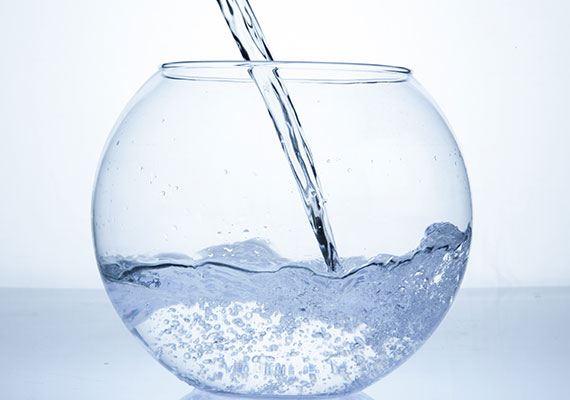
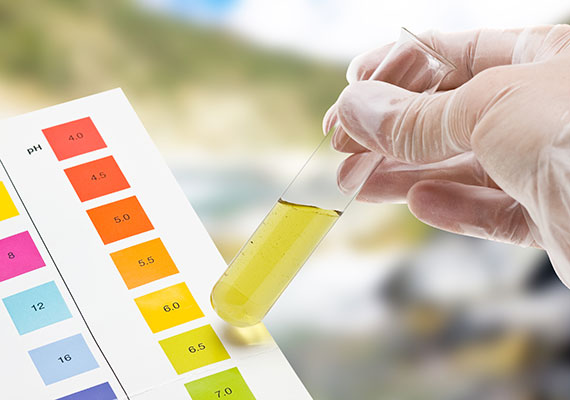
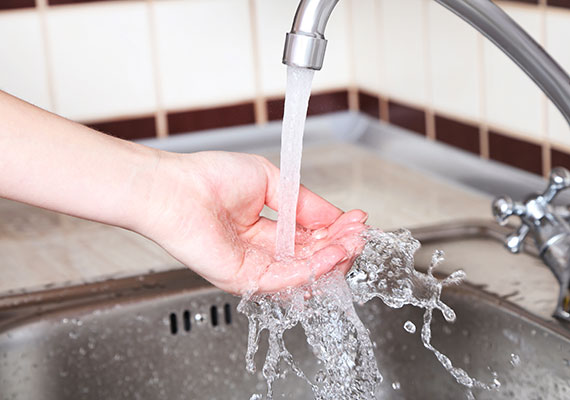
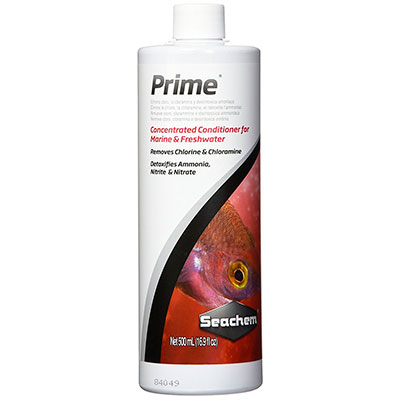

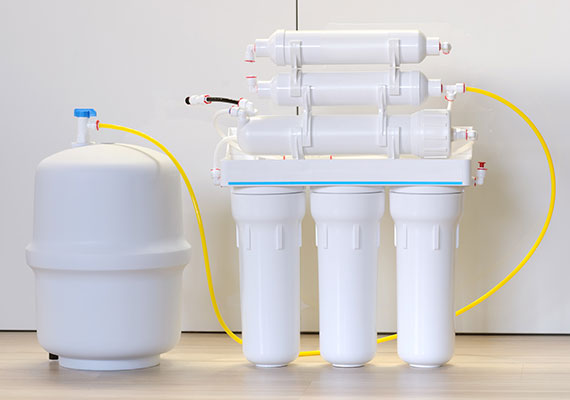

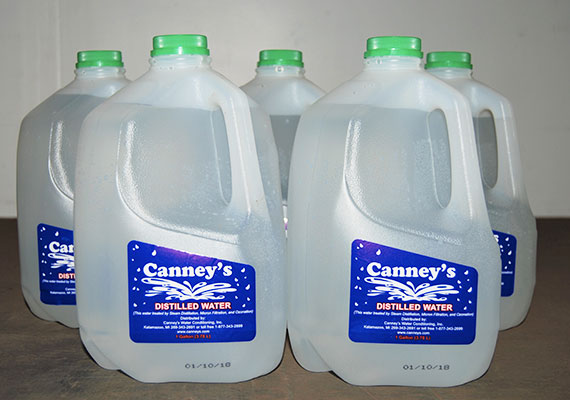
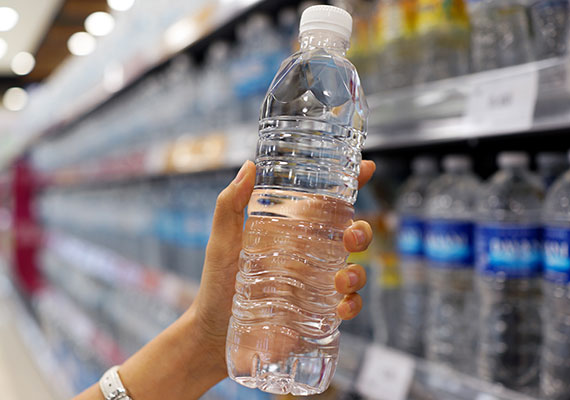
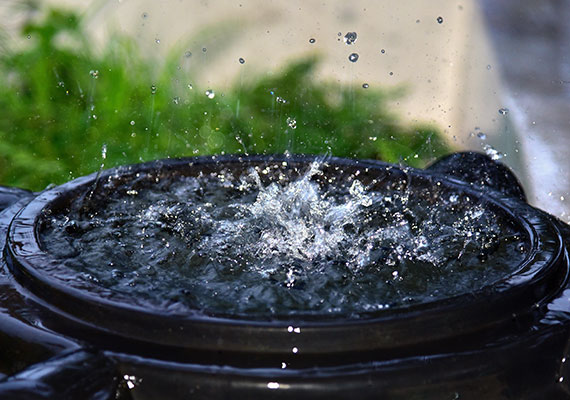
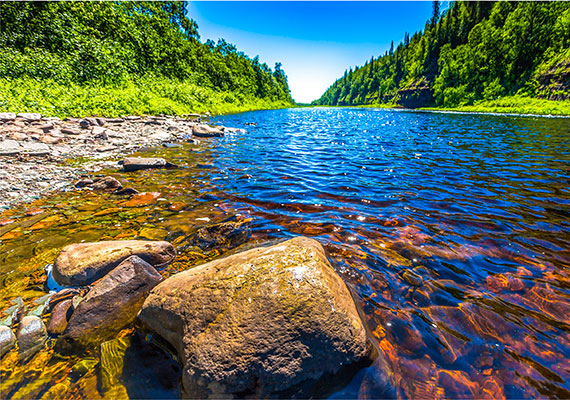

Comments (44)
I am Piyush from Maharashtra, India. keeping fish from 20 years, I am using Tap water with dechlorinate liquid from local pet shop it is very cheap only 1 drop is enough for 1 gallon water.
In our area there is no 24 hours water supply, we get only 1 hour water supply in two days.
So I am thinking on recycle aquarium water using Water Lettuce and water hyacinth, is it possible to recycle Aquarium Water at home ??
Hi Piyush,
Are you talking about for drinking? Or to remove nitrates from the water?
I have no experience on drinking and cannot comment.
As for creating a tank where water changes are not needed, it certainly is possible. The biggest issue is removing nitrates and remineralizing the water so that fish can effeciently osmoregulate. If this is what you are after, you could read up on the walstad method. It’s quite a balance but it certainly doable.
I just got a fish and there is bubbles on the rocks and I hope that is normal
Hi Kyleigh,
Read my bubbles guide for causes of bubbles. It’s likely the first solution, as a result of filling your tank. Did you cycle your tank before adding your fish? If not, read my fish-in cycle guide.
I mix 25 gallons of tap water with 5 gallons of reverse osmosis water and pump it into my tank.
Hi Ron,
That’s a great way to soften your water!
Recently (2x already) I started leaving my goldfish in the tank as I complete the water change. Is this harmful to them? I add Safe Start when I begin filling with new water. They’re still small and figured it is easier than trying to catch them, and making them scared and stressed out. What should I do?
Ho Monica,
You are not expected to remove your fish when you perform a water change removing them will stress them out much more than leaving them in. However, you would ideally add the dechlorinator to the replacement water rather than the tank itself.
Can irrigation water be used for freshwater tanks with proper conditioning?
Hi Janie,
Probably not. If we are talking about the run-off, It would have all sorts of chemicals from fertilizer and bug sprays.
First – this info is super helpful. Well written and organized – so thank you!
Now I have a follow up question. We are on a well in an area with really hard water that has a hair-turn-orange iron content. So we have a kinetico water softener (brine tank) and an RO system for drinking water. I am currently doing a fishless cycle using the softened water. Is softened water bad for fish? The tank readings right now are:
– pH 8.4 (it’s been creeping up from 8.0 over the last few days)
– Ammonia 0
– Nitrites 0
– Nitrates 20
– GH 4 drops
– KH 14 drops
I plan to do the first water change today in anticipation of getting a fish tomorow but am a bit worried about the pH/KH/GH trio.
Thanks!
Beth
Hi Beth,
It all depends on the type of water softener you have. Many replace calcium with sodium, which isn’t good for freshwater fish.
Ro water is fine, but it will need to be re-mineralized prior to being added to an aquarium. There are many aquarium products, like seachem’s equilibrium that will solve this problem.
Hi Ian,
I get my water for my tank at a local purified store and my tank within a 3 or 4 days has a horrible smell to it and I don’t understand why. I’m new at the fish tank deal and was wondering if you could help me. I had a friend to tell me to add about a half teaspoon of salt to the water but I was concerned about doing and if it would harm my fish. I would appreciate any advice you could give me on this because I love my fish and would hate to throw in the towel and give up because of the Oder.
Hi Linda,
Do you use an aquarium test kit to test your water? Do you gravel vac reguarly? Do you perform regular maintenance? Do you overfeed? There are many many different reasons why an aquarium can stink.
I explain the most common reasons here
Hey Ian.
I think I told you in another post that my tap water testing results before adding anything to it reads .50 ammonia, however if I recall that is really ammonium and harmless to fish correct? Since the master treat kit can’t differentiate between ammonia and ammonium then it should be fine…. I have some gallons of purified drinking water in my closet and it says it’s been processed by reverse osmosis – I just tested that and that also reads .50 ammonia so I guess I will go with the tap water.
One thing that scares me is my tap water has a very high ph of about an 8 while the drinking water is about 7.4….
Should I be using a ph regulator in my tap water before adding it to the tank to bring it down?
I also had a few more basic questions since we kind of started backwards lol- very complicated unheard of scenarios now I have some basics ..
Question 1
Assuming tanks are cycled and I test the water and get ammo .25 nitrites 0 and nitrates 5 should I automatically go a water change or instead of testing weekly should I just automatically do a water change weekly, bi weekly or monthly depending on the size is the tank.
Question 2
I use prime for my dechlorinator however I do understand that when using a BB like TSS you need to stay away for prime. I have 3 tanks that I am cycling with TSS so how long do I need to wait to use prime again? And what is your next go to conditioner? I have so many, api Tap water Conditioner, api safe start, api stress coat, Betta conditioner, And 2 tetra products.
Question 3
Since I just bought up tetra I bought two products that have me a bit confused. They literally seem to do the same thing however they are two totally different products and bottles.
I have Tetra aqua safe that says on the front CONDITION MONTHLY removes chlorine, protects and reduces stress. Then I have tetra aqua safe dechlorinator and conditioner. The only difference is this one says the words dechlorinator and conditioner and does not say reduces stress.
Have you seen these products? Is there even a difference?
Question 4
Last we spoke we talked about the money I spend weekly is way to much so with that being said I’m sure it’s no surprise I have SO many products and half of them
No clue what they do lol. I am going to list the main ones and could you please tell me if I have multiple things for the same purpose and if there are certain ones you like.
Here it goes lol
Api safe start, api stress coat plus, api tap water conditioner, api accu clear, api ammo lock, Betta conditioner, Betta fix, pimafix, melafix, aquarium salt, big box of activated carbon, big box of white diamond zeolite, alkaline buffer, ph regulator, fluval concentrated biological booster, seachem prime, stability, and something I can’t read because it’s in Chinese lol ; its a box of two big blocks and I just looked on amazon and it says 3D Nano culture bricks , culture Bactria ball processed by as cancer technology. Decomposition of harmful ammonia and nitrite in water. Contains trace Elements and rare earth Elements beneficial for fish. The box has two big squares lol and I have no idea if I should use this or how.
Question 5
In a fully cycled aquarium can I keep a mesh bag of white diamond zeolite or something like that to prevent ammonia?
Question 6
Are you sick of me yet lmao you just really think I am insane lol JUST KIDDING.
But I am about to do a water change and am i correct in assuming the only thing I need to add for now is water conditioner? That’s what I will do until hearing back from and you no rush by the way I asked you a million questions and I know your a super busy guy
Hi Again, Dominque!
It all depends on the fish you keep. A pH regulator will certainly do the job but it’s an ongoing expense and messing with pH levels can be a delicate process. Alternatively, rather than messing with adjusting pH, you could choose fish that prefer a higher pH water – there are many stunning fish that look stunning. If you google “high ph fish” you should find many examples.
For water changes, weekly is best. It gives you a chance to clean the tank and keep an eye on any problems that could arise across the week. 30-50% water change should be enough, but this will vary according to your test kit results.
If you wanted to be careful, a week after the last dose of prime should be more than enough time. I personally use prime on account that it is effective and goes the furthest, which saves me money in the long run. You’ll only need a few drops to dose smaller tanks. If you are using prime, I recommend using a dropper or disposable pipette, it can be difficult to measure out the small amount you need otherwise.
On the tetra products, I know aquasafe and aquasafe plus. Are these the products you are referring to? Aquasafe also has “beneficial bacteria” to supposedly maintain the aquarium filter, but in my opinion it isn’t necessary. Regardless, you want to add dechlorinator whenever you add tap water to their tank, not once a month.
Wow. You ended up with a LOT of products.
Api Quick Start – Water conditioner (prime)
Api Tap Water Conditioner – Water Conditioner (prime)
Api Stress Coat – Water conditioner + Slime Coat (may help stressed/sick fish, Independent study from university of Georgia suggests it won’t) (prime)
API Accuclear – Water Clarifier (not really needed if your filtration is set up properly)
API AmmoLock – Ammonia Detoxifier (prime)
Betta Conditioner – water conditioner (Prime)
Seachem Prime – water conditioner that does everything the above do.
Pimafix (medication for fungle infections)
Melafix (medication for physical wounds (fin damage, open wounds)
Bettafix (Medication. Same as Melafix except for concentration of active ingredient 0.1% vs 0.2%)
Aquarium Salt (medication, can be used for ich and other diseases)
Activated carbon (chemical filtration for smells and tannins released form driftwood) (not necessary in a regularly maintained tank – may be used in emergencies)
Zeolite (chemical filtration for ammonia) (Not necessary in a well maintained cycled tank – may be used in emergencies)
pH regulator – adjusts pH. How and to what level depends on regulator.
Alkaline Buffer – Adjusts KH, most ph buffers do this too.
Fluval biological booster – beneficial bacteria, not needed in cycled tank
Seachem stability – beneficial bacteria, not needed in cycled tank
Can’t really say what the other thigns are but they are probably not needed.
All you will need in a healthy tank is:
Water conditioner.
Medication (just in case)
and if you DO decide to adjust pH of your water each and every water change, then a pH adjuster.
You won’t need diamond zeolite or anything like that. An ammonia spike is actually useful since it can let you know something is wrong in your tank. Zeolite can hide this problem, pushing it down the road until the Zeolite needs replacing in which case the ammonia will spike again.
I think you are curious. That’s fine 🙂
In a healthy tank, the only thing you need to add is the water conditioner during a water change – once you are up and running, fish keeping is much cheaper than the petstores make it seem.
I filled my tank with spring water. Tested before and it was great. Cycled it and now the amonia is SKYBHIGH???????
Hi Di,
When you say you filled it with spring water, did you test it when you added it? The ammonia rising is part of the cycling process. If it has ammonia, then your cycle is proceeding, it has not been cycled yet.
I used tap water. Very convenient
Then I added API Stress Coat+ water conditioner and dechlorinator
It worked great and also reduced stress for fish
I always use that, the same way. My fish always live happy long lives. I have also been catching local bass and sunfish lately, and adding to existing tanks. They adapt well to water changes. Way better than pet store fish.
Also, I use API stress zyme+ for beneficial bacteria (needed) and API AccuClear as once I started noticing my water started getting cloudy too. Then I had an API ammo lock (just in case the ammonia spikes) and aquarium salt for all the medication and improving gill function and electrolytes and a tetra 7 in 1 test kit and a seachem ph and ammonia monitor and a API quick start for nitrite and nitrate and yes that’s it Do you think it’s okay?
Hi Tom,
Are you in the process of cycling? If so, cloudiness is normal and to be expected. It typically looks like a white haze and will go away on it’s own by the time the cycle is complete.
I’ve been thinking about getting a RO system. The average PH in my city water is 9.4 – and it ranges as high as 12 – not going to have much luck finding freshwater fish that can tolerate that high of PH. I continue to us PHdown (or PHup when I overshoot). It’s frustrating since I’ll get the PH to around 7.2 and it will continue to decline to 6.0 during the next week so I’ll find myself adjusting it mid-week, then it usually settles down. Of course, then it’s time to do another water change. Our water also contains 1.5 ppm ammonia – our city water manager said that’s not supposed to happen and is “looking into it” but basically every time I do a water change I risk increasing my ammonia rather than decreasing it. I add Prime every other day to make sure the ammonia stays converted to ammonium.
You discuss re-mineralization of the RO water before using it for an aquarium. How exactly would I know which additives to add to the water? Is RO water safe to drink without re-mineralizing it? I remember a Chemistry professor telling us that if we drank Distilled water all the time we would eventually die of dehydration since there is no way for you body to get the minerals you need to drink it and it will suck those minerals from your cells. RO water sounds like it presents the same problem.
Also how practical is it to use? I don’t want to have to run my water constantly due to the waste and try to find a huge barrel or tank to store the RO water in. I have 3- 29 gallon tanks and I change at least 16-18 gallons of water per tank each week. So I would need to have that on hand at all times to stay on my weekly water schedule change. Is RO water PH neutral (ie., about 7) or am I still going to find myself adjusting PH during the week.
Thanks for your help!
I really do want to stop using out tap water as it comes from the tap, but am concerned I would just be trading in one set of problems for another.
Hi Jan,
It sounds like you have already given this a great amount of thought and identified the problems of both approaches. You are indeed correct in that you are trading in one set of problems for another. On the drinking water front, I don’t have a whole lot of knowledge as to the long term effects of drinking RO. As far as remineralizing is concerned, there are a wide range of products that do this, such as seachem equilibrium. Whichever approach you take, you will need to balance the water before adding it to your tank. As for practicality, it all depends on your personal situation – which problems are easier for you to overcome?
Hi Ian!
Thank you for all of your helpful information on this blog. It’s been a wealth of knowledge for me to get back into the hobby. My 75 gallon tank is in week two of a fishless cycle. I used my tap water which fit the parameters of 0 ammonia, 0 nitrite, and less than 10 nitrate. The pH runs a touch on the high side of 8.2.. sitting at 8.4 through this process. I finally got my first spike of nitrites (hallelujah! By the way, I followed your fishless cycle post). I am waiting on my RO/DI system to come in the mail this weekend. My local shop here set me up with some remineralizing SeaChem products that will help with plants when I start adding them. My question is this… what would be your recommendation of adding in my RO/DI water? Basically, how much of a water change should I do to incorporate this new water?
Ideally I’d like a MUCH softer water to have more delicate inhabitants.
Thanks again for all your help!
Kasey
Hi Kasey,
Tough question. It all depends on your current water. I assume you are buying a water softener because either your KH or GH is off the charts? To be honest, to start with, it’s very much going to involve trial and error. I’d start with 30% and monitor the change. If the KH, pH and GH drop lower than you like, you know you need less. putting it super simply, a 30% waterchange will roughly lower these amounts by 30%. If you need more, add more. It will take some messing before you get it right. But once you have the exact amount, you can use that amount for each future water change with a certain degree of confidence.
Thank you for your feedback. My KH and GH are astronomically high. I gave up after 22 drops with my API tester.
Would this water change be most appropriate after my cycle has completed?
If you are in the middle of cycling your tank, I’d see it through to the end before adjusting the hardness. I dislike making adjustments during the cycle. If something goes wrong, and it stalls, it’s another thing to you need to troubleshoot – I’m big on keeping the cycle simple.
Yes I have a 15 gallon fish tank , I usually only put gold fish in my tank, my problem is my water always change to a dark green Color in to or three weeks, I even changed all the water out of the tank, I use tap water for my tank, wanted to get my water checked at the water plant in the city, they said it would cost me $20.00 to have it checked, but Seriously going to get it checked, the water is clear when it come out of the tap, I only use cold water, this just happened to are tank last year, I even use two cap full of stress coat, in the tank, the fish store couldn’t give me a answer, would really appreciate if you could thank you Charles Smith.
Hi Charles,
There isn’t enough to go off here, although I will say that your tank is likely too small for multiple goldfish. You should be doing weekly water changes at a minimum how often do you change the water? What does your test kit say for ammonia, nitrite, nitrate and ph? What is the water temp and how long do you leave the lights on for?
Hi 🙂
I recently purchased several 5 gallon water storage containers to store emergency water for my fish in case of an emergency ( unsafe water, no running tap water, etc). I do have a RO tap as well as a regular tap. We also have an aquarium service and they use both ( fix tap water with PRIME). But with all that’s going on in the world today, we’d like to have water stored for them. Which is better to store: RO or regular tap? We have (in separate tanks) large goldfish, guppies, barbs, and 1 saltwater tank with a pistol shrimp & other invertebrates clownfish. Thanks l much for your advice and may God bless you and keep you and your loved ones ( of course pets included) safe.
Hi Christina,
Crazy times indeed, I hope you and your loved ones are staying safe!
Regular tap water is better for the fresh water tank. If you use RO water, you’ll need to remineralize it. Freshwater fish need trace minerals which are stripped out during the RO process.
For the saltwater tank, RO water is the way to go since the saltmix is essentially “remineralizing” the water for you.
Thank you so much Ian! God bless you ????????????????????????????
Hello! I currently have two betta girls in separate 3 gal. tanks, both I used a bottled spring and purified mix, both half and half.
I would use tap, but my city is known for using fluoride in the water, which I don’t think conditioners will touch.
In one tank, the alkalinity is high. Can I cut that down with distilled water? I don’t know where to look around here for RO water…
Hi Cara,
This should teach you everything you need to know about KH (alkalinity) and lowering it:
https://fishlab.com/aquarium-kh/
Thank you so much! My fish and I are incredibly thankful <3
I would like to recommend that you keep your betas in ten gallon tanks. I also believe that the tanks should be heated. I’ve heard that this makes for much happier fish with brighter colors to prove it.
Hi. I have had aquariums before with less trouble than what I have now, & I am lost as to what to do. This article helps, but I am still not sure.
My uncle has a tank here – 5 or 10g, not sure. He said he never did anything except add a conditioner to the tap water & top it off. It recently got quite dirty, & I noticed Nitrate was 200ppm, so I cleaned & did a 50% water change last night. Nitrates haven’t dropped, so I’ll try to find something for that. But the point of bringing up the small tank is, he never did anything special to it, & the 1 tetra & 1 cory seem fine, & have been there quite a while.
But then, about a month ago, he got a 20g tank. He didn’t cycle it properly. After only 24 hours of running it, he got a bunch of fish, & most died by the next day. We were left with 4 tetras, 1 guppy, 2 cories, & a snail. Anyway, I am learning different things over time. At first, I only tested PH, & it was staying at 8.4ppm. I did many water changes, with the PH never changing. Then I was told to add a little aquarium salt, which killed everything except the guppy & 1 tetra. So I found out my water is too hard, which I didn’t know much about. I went to the pet supply store, & they gave me a liquid KH test. I didn’t know about GH. So KH was very high, so I got a water softener pillow. Then I got 5-in-1 test strips, & that’s when I found out about GH. So yeah, the pillow got the GH down, but obviously not the KH. And I have learned I have to get the KH down before i can get the PH down.
But I did a pretty big water change before adding the pillow, so now the Nitrite level in that tank is up.
So again, all I have used in both tanks is tap water with Tetra AquaSafe – was using Easy Balance before. And I am using the 5-in-1 test strips.
My current readings are –
Small tank –
Nitrate – 200ppm
Nitrite – 0ppm
GH – 150ppm
KH – 180ppm
PH – 8.4ppm
20g tank –
Nitrate – 0ppm
Nitrite – 3.0ppm
GH – 150ppm
KH – 300 ppm
PH – 8.4ppm
Tap water –
Nitrate – 0
Nitrite – 0
GH – 300ppm
KH – 300ppm
PH – 8.4ppm
(Filtered tap water is the same)
So, obviously, I need to do something more to get Nitrates & Nitrites down. But when it comes to the water – mainly the KH…I was told in another forum that I should leave it as is & not worry about it, but a friend told me that a high PH over time would kill the fish. In the small tank, like I said, those 2 have been in that same high KH & PH for many months, at least 8, maybe more. These 2 in the 20g have survived everything I’ve put them through for the 1 month they have been there. Again, tetras, guppies, cories. Is the other forum right – leave it alone – or my friend – PH is too high?
If I do need to lower KH/PH, I think I need to maybe mix another type of water – maybe spring or distiiled – with my tap water, & use that to make water changes? And if I do, would I do 50% or smaller?
Thanks
Btw, my uncle is impatiently wanting to add more fish…so I need to know what to do to be able to add more (the same type) fish. I also want to get more cories & snails a.s.a.p.
Hi Cassie,
It sounds like your nitrates are off the charts. If your uncle has never done a water change, then the nitrates will be so high that multiple water changes will bee needed to get them back down. E.g at 600 ppm, a 50% water change will drop them to 300 ppm, which is still off the charts, so it looks like they have not moved. Also, fish are very good at hiding their stress (since in the wild it would make them vulnerable to predators) just because they look fine, doesn’t mean they are. Some fish are much more tolerant of poor water quality than others.
My first advice is to get rid of the test strips and use an aquarium test kit. Test kits just aren’t accurate. It’s impossible to make a good decision with an inaccurate reason. My recommendation is to get the api freshwater master test kit + the gh/kh test kit, sold separately – it will save you money in the long run, these test kits can last for years.
Hard water tanks wills till cycle. So that’s not the issue here. With water like that, you should consider hardwater loving fish. It means you can skip the water softner and balancing, where errors often occur, and you save money by not buying ph/kh reducers. It’s best to choose fish for your water, not the other way round. A high ph will not kill hard water fish over time. Only fish and inverts that prefer soft water.
A high ph = a high kh. Read this for more info:
https://fishlab.com/aquarium-kh/
Next, this is how you cycle a tank without fish in it:
https://fishlab.com/how-to-cycle-aquarium/
Thanks for the reply.
I did water changes today to hopefully help some with the nitrates & nitrites, & will continue to do them.
I am going to get those test kits asap. I hope I can find them in a store.
And I agree it would be much simpler to get different fish. Reducing KH & PH seems complicated. But, this is my uncle’s tank – well, both are – & he wants the guppies & tetras, & that’s mostly what he has had before. I am the one taking care of all this because he works out of state & is gone a lot, but he wants those type fish.
I think the lime in our water is causing the hardness.
But thank you for the links, too. I will look at them in a minute.
Hi Cassie,
The API test kits are very common and should be on the shelf of most aquarium stores in the USA.
Your thinking is absolutely correct on the lime, it raises water hardness through the addition of calcium and magnesium.
If anything, you are lucky that you can keep cichlids – check them out, in my opinion they are considerably prettier to look at than guppies and tetras.
Given your uncle didn’t care for his previous tank, he likely has no idea as to what goes into maintaining good water quality. If you are the one doing the work, you should at least have some say on how much work you have to do.
Thanks for the tips, & again for the links. They are very helpful.
I will try to explain things to my uncle, but he might not understand.
But if it comes down to it, I might have to get distilled water (looking at the first link) & mix it with my tap water, & use that for water changes. Correct me if that’s the wrong way!
And I will have to go back over the 2nd link at least 1 more time.
Thanks again!
Hi Cassie,
Yes, that is one way of reducing hardness, but it’s requires lots of balancing, it can be a real pain in the butt that can stress your fish if not done perfectly. The easiest way is to buy KH adjusters.
All good on the cycling, I understand it’s a tricky concept. Leave me a comment on that page if you do have questions, so they can help other people reading.